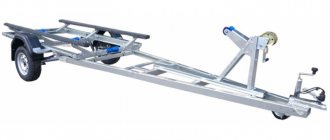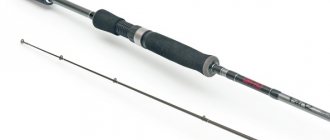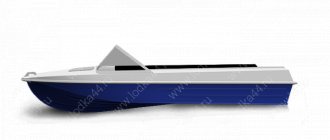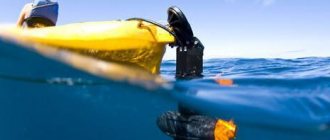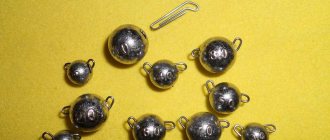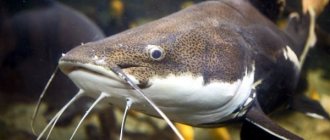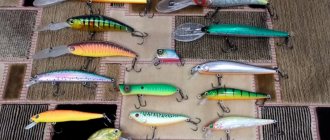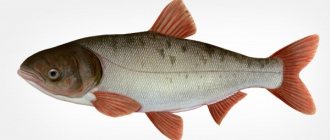A series of boat models manufactured at the Kazan aircraft plant became one of the most recognizable and beloved in the Soviet Union, thanks to which it broke all records for the duration of production. Its success lies in the fact that the design of each of them was carefully thought out by the development engineers, as well as due to the careful study of the comments and wishes of consumers after the next release of a new copy from the assembly line. Testing sometimes lasted up to 5 years, during which testers mastered the motorboat in the most unfavorable conditions, storms and frosts.
“5” is a fairly successful replacement for the previous modification. It has smaller parameters, but has become more transportable and lighter, while maintaining the level of comfort at the same level. Small differences in the contours of the deck did not affect the seaworthiness of the craft: waves up to 75 cm are not an obstacle in rough weather. Operation is possible in reservoirs of various sizes, sea bays, without going further than 3000 m from the coastline. Outboard engine, 30 HP. pp., mounted on an external bracket behind the stern. With this power, in the absence of passengers, the glider moves at 44, and with a full passenger load - 35 km/h.
Video of the boat Kazanka 5:
The Kazanka 5M boat has a design and contours in the spirit of the fifth version, with which it can easily cope with various types of reservoirs from rivers to sea halls. Obedient, maneuverable, roomy, with improved hydrodynamics. With double PM it accelerates from 34 to 52 km/h. Four people can comfortably fit in it, with shelves and cabinets with everything they need for the trip at hand.
On the Kazanka boat called 5M2, the transom has evolved to the familiar sub-engine niche, designed for a single engine. This improved the centering of the vessel, since the hull was slightly shortened. The propulsion unit is now more securely attached to the stern; the weak link—the outrigger bracket—has disappeared. Another improvement is the ability to seat 5 people. The outlines and shapes of the cheekbones have not changed.
All the same characterizes the Kazanka boat of the next modification 5M3 with the only variable in the form of a more powerful PM (60 hp). The Kazanka 5M4, as well as the Kazanka 5M7, are equipped with concave outlines instead of convex ones. As a result, the deadrise angle became 8.5°, and then 16°, as a result of which the bow lengthened. The cockpit has been refurbished to meet modern requirements, driving performance and buoyancy have reached the maximum level.
Advantages and disadvantages
“5”
| Advantages | Flaws |
| Improved centering of the boat due to the unusual location of the PM. This factor significantly reduces vibration. | Duralumin cannot be welded, the rivets become loose and have to be drilled out and replaced. Afraid of electrochemical corrosion upon contact with steel. |
| The designers raised the freeboard on the stern side, so the recess stopped filling with water when moving. | During the mooring process, there is a possibility of damaging the engine, since it is not protected by anything. |
| Excellent planing and running properties. | Liquid leaks into the habitable space through the passage of the cable, which serves to transmit impulses from the helm to the steering, since the partition in the stern is leaky. |
| Exceptional stability on the move. | Climbing onto the deck, moored with the bow to the shore, is difficult due to the significant deadrise. The bottom barely clings to the ground and is unstable, and the decked forepeak is not wide enough to maintain the balance of the motorboat if a person climbs onto it. |
| Spaciousness and convenience that are | |
| crucial for long trips. |
“5M”
| Advantages | Flaws |
| Faster speed due to the installation of 2 PM. | The designers left the previous body length, which is inconvenient for maintenance and self-repair. |
| Added storage space for luggage and personal items. | The remote bracket creates a number of problems: flooding of the engine, making it unsafe when parked with the stern to the shore. |
| The remote bracket creates a number of problems: flooding of the engine, making it unsafe when parked with the stern to the shore. | The motorboat could swim faster if it were not for the small running trim, due to which, during the planing process, a larger area of the bottom is wetted with water than it should be. |
| The holes for the steering cables in the transom no longer leak as they are sealed more thoroughly. | |
| Improved glider alignment due to different seat placement. | |
| Improved remote control. | |
| The awning is installed differently, attached to special locks. | |
| Deck covering that is safe for occupants: smooth, without brackets or protrusions. | |
| High degree of stability. |
“5M2”— “5M3”
| Advantages | Flaws |
| Light weight, allowing you to easily pull the craft ashore or displace it from the shallows. | The “twisted” contours created a dangerous yaw when meeting a wave, slowing down the movement. |
| The propulsion unit is installed in the sub-engine niche. | |
| Excellent unsinkability and controllability. | |
| Capacity 5 people. |
“5M4”
| Advantages | Flaws |
| Improved design resulting in faster movement, improved seaworthiness and easier planing. | |
| It became possible to use PM more powerfully. |
“5M7”
| Advantages | Flaws |
| The service life guaranteed by the manufacturer is 15 years. | The basic kit does not include oars. |
| The cockpit is enlarged due to the open bow. | Thin bottom. |
| Free passage for passenger movement between two consoles with a windshield. | Weak stiffness in the forepeak area (according to shipowners' reviews). |
| The body is made of a combined material: plastic and duralumin. | |
| You can choose the appropriate configuration from three options. |
Boat structure
The Kazanka-5M2 motorboat consists of the following main parts:
Frame.
Engine.
Windshield.
Control system.
Folding awning.
Signal mast.
The motor boat is conventionally divided into two compartments: bow and working (cockpit).
A windshield organic glass is installed on the deck, directly in front of the working compartment. Its purpose is to protect the crew and passengers from splashing water and wind. The glass itself consists of two parts (right and left). There is a profile frame around the glass. It is used for fastening to the deck. For this, special brackets are used. A rubber gasket is placed at the joints of individual elements. It protects against vibration and mechanical damage to the glass.
Read Catching large perch in winter
The outboard engine is controlled by a cable system. The control system can be divided into two components: remote and steering. The driver controls the boat using the steering wheel and remote control. From the steering wheel to the motor itself there is a system of cables that turn the engine. In addition, they provide throttle and braking control.
A remote control panel is required if Neptune or Whirlwind power units are attached to the vessel.
The bottom of the motor boat “Kazanka-5M2” is covered with sleds. They are made of waterproof plywood. The slings are fixed to the frame of the vessel with screws.
History and goals of creation
Motorboat 5 has been produced since 1973, being developed almost simultaneously with the third modification. Compared to the first production model, this one's modernization and technology were at a revolutionary level. The designers eliminated a large number of shortcomings, completely redid the structure and maximized comfort and seaworthiness. The next 5 years, in which the Kazan Aviation Plant named after. S.P. Gorbunov produced the Kazanka 5 motorboat, the company sold more than 10 thousand copies. Over the entire production period of the motorboat, the plant periodically made improvements to the manufacturing process, listening to the opinions and advice of shipowners. Thus, the technology for creating and applying paint was completely changed, gaskets began to be placed under windshields, thiokol tape began to seal not only the joints, but also the fender, the design of fasteners for oars, seats and many small things was changed.
In 1978, the shelves of domestic stores were filled with the new “5M”. Its concept is to eliminate all the shortcomings of the previous release and make improvements based on comments from the owners of the vessel. The work was carried out over 5 years. Already in the first year, the production committed itself to producing 5 thousand copies. The manufacturer practically did not change the basic parameters and dimensions, placing the main emphasis on increasing speed and equipping the internal space.
Subsequently, the line expanded with such new products as “5M2” and “5M3”. The essence of the modifications was to change the design of the transom and more spacious internal space of the motorboat. Since 1989, the “5M4” began to be produced: fast, comfortable, designed for 2 engines and with new cheekbones. The owners noted very good strength of the bottom and sides, excellent hydrodynamics and stability.
For many years it was difficult to compete with her. By the end of 1993, the plant put 2,400 of these motorcycle boots on the shelves. But at the same time, the “5M7” models were produced for several years. They had both their advantages and disadvantages. They looked modern and stylish. But in use they turned out to be not as durable and wear-resistant as the previous ones. By 1995, the Gorbunovites had exhausted their capabilities and resources in the field of shipbuilding. Due to economic difficulties, it was decided to close the line, and since 1995, not a single copy has left the assembly line.
Characteristics table
The main characteristics have been confirmed during long-term testing by teams of designers and shipowners.
| 5 | 5M | 5M2 | 5M3 | 5M4 | 5M7 | |
| Maximum length, m | 4,5 | 4,5 | 4,5 | 4,5 | 4,6 | 4,5 |
| Overall length with engine bracket, m | 4,9 | 4,9 | 4,6 | 4,6 | 4,6 | |
| Maximum width, m | 1,6 | 1,6 | 1,6 | 1,6 | 1,65 | 1,65 |
| Side height at midship, m | 0,72 | 0,72 | 0,72 | 0,72 | 0,78 | 0,88 |
| Bottom deadrise angle amidships | 5 ° | 5 ° | 5 ° | 5 ° | 8,5° | 16° |
| Weight without PM with equipment and gear, kg | 190±10 | 190±10 | 190±10 | 190±10 | 190±10 | 220±10 |
| Load capacity, | 400 | 400 | 400 | 400 | 400 | 400 |
| Passenger capacity, persons | 4 | 4 | 5 | 5 | 5 | 5 |
| Permissible PM power, l. With. | 30 | 55 | 55 | 60 | 60 | 50 |
| Wave height, m | 0,75 | 0,75 | 0,75 | 0,75 | 0,75 | 0,75 |
| Assembly | riveting | |||||
| Housing material | D1AT |
Characteristics of the Kazanka boat
It is difficult to give the main characteristics of the Kazanka boat; they will all be generalized and vary depending on the modification of the model. Let's first look at the general characteristics, and then move on to different boat models.
- The maximum length of Kazanka boats can be up to 4.6 meters;
- The width can be up to 1.2 meters;
- The average deadrise angle of boats is 4 degrees;
- The height of the sides of the boat is 68 centimeters;
- The average load capacity is an impressive 400 kg;
- Mostly the boats are four-seater;
- Design features allow you to reach speeds of up to 25 km/h.
Technical characteristics of the motor boat Kazanka 2M
Lokda Kazanka 2M is considered the largest boat ever produced in the USSR. This is one of the best modifications that is still popular today. But as such, its technical characteristics coincide with the list above, so we will not repeat ourselves, but will only present you with a photo and consider its modifications in more detail.
Motor boat type Kazanka 5M2
Kazanka 5M2 is considered the most popular modification. It still occupies a leading position on the Avito bulletin board and on the fishing markets of St. Petersburg and Moscow. The main characteristics are:
- Length 4.5 meters;
- Width 1.6 meters;
- Capable of lifting loads up to 400 kilograms;
- Capable of reaching speeds of up to 40 km/h;
- Designed for 4 people.
Motorboat model Kazanka 5M4
Modified Kazanka 5M4 boats have been produced since 1990. The main difference between the boat and other models is the convex contour of the hull and the increased deadrise angle at the transom of 8.5 degrees. And I was also very pleased that the manufacturers managed to get rid of the yaw of the boat in a headwind, increasing engine power and maximum speed.
Characteristics of the motor boat 5M7
Among the generalized characteristics, we have highlighted some maximum values. Now let's talk more specifically about the technical characteristics of the Kazanka 5M7 boat:
- Its length is 4.6 meters;
- Width – 1.65 meters;
- It is capable of lifting loads up to 400 kg;
- The boat can be equipped with a motor with a power of up to 50 hp;
- The boat is five-seater;
- The manufacturer indicates a service life of 15 years.
Appearance and design features
“5”
The planing contours are shaped like the modification, with a low deadrise at the transom (5°), which increases towards the midsection to 22°. The only difference is that the deck at the front has a blunt outline. This structure of the contours at speeds from 25 to 28 km/h creates minimal resistance, and the small running trim makes it easy to get on plane. At full speed, there is a perfectly balanced moment relative to the center of gravity, but hydrodynamic forces are concentrated over a longer hull length than similar vessels, so maximum acceleration is lower.
The technical characteristics of the motorboat remained at the proper level, despite the fact that it is designed for a single PM. The outrigger bracket is inclined at an angle of 10° and is located at a height of 39 cm relative to the main line. This allows you to save space inside the boat for storing personal belongings and tools, unlike installing an outboard engine in a recess. This further eliminates the problem of water flooding from the rear, since the design of the stern section has been simplified.
The duralumin body of the Kazanka is made using riveted assembly technology. The bottom is stamped from solid sheet metal with a cut in the place of the future keel. An innovation from the factory is a contour amplifier placed at the junction of two aluminum profiles. The stem consists of a profiled piece of metal. The necessary rigidity and strength of the bottom and sides are ensured by the presence of not only a transverse set, but also stamped corrugations and landings. The forepeak is decked, equipped with a bow trunk and a compartment filled with foam. Unsinkability blocks are located in the stern, lockers and along the sides.
Photo of the boat Kazanka 5:
“5M”
Since the structure, contours and main dimensions were inherited from this modification from the fifth, we should focus on changes and improvements by development engineers. They relate mainly to the modernization of equipment and improvement of interior decoration. This direction was able to satisfy the consumer needs of users and create more comfort when traveling. The interior design reflects the work of the designer, expressed in carefully thought out functional furniture and storage areas for luggage.
- Kazanka 5M is equipped with a panoramic windshield, curving on the sides, which is enclosed in a decorative metal profile and reinforced in the center with a stand. The downside of the material is that organic polymer tends to scratch. This shape allows you to protect against the penetration of splashes and oncoming air flow. An additional option has appeared in the form of manually controlled windshield wipers
- The sub-motor bracket has been converted to accommodate 2 engines. It intensified and became wider. At the same time, the right to install one motor or two remains with the driver
- Mooring the boat is facilitated by mooring cleats located in the rear and forepeak
- The internal space around the perimeter is fenced with a coaming, stamped and installed as a fence against water getting inside
- Storage systems are evenly spaced. In the rear there is a spacious trunk for fuel tanks, in which you can store an outboard motor when parked. It is covered with lids on top, locked with a padlock. If it is necessary to easily approach the mover, they rise, forming a narrow passage. The functionality of the sides is ensured by shelves with closing doors. There is a bow compartment at the front for storing tools. It is large, sealed and can be accessed both from the torpedo side and through a hatch on the deck. There are recesses for small items on the front panel, and in the middle there is an additional cabinet
- Sockets are provided for attaching Stop buttons
- The remote control has no return springs due to the use of a cable with a Bowden sheath
“5M2”, “5M3”
Kazanka 5M2, like its subsequent version, is distinguished by a new transom design. Having listened to consumer complaints, the factory workers installed the engine in recession. But this did not affect the functionality and spaciousness of the cockpit. The motorboat has lost 30 cm in length, but the width remains the same. The power set consists of 8 frames. There are two seats: front and rear. When unfolded, they form a sleeping area for two adults. There used to be a large luggage compartment in the stern. Now it has shrunk by 4 times and is located next to the rear seat, in front of the transom.
It is great for storing fuel containers. Buoyancy blocks are placed in different ways. The first model has foam plates inserted into the forepeak and under the rear locker. The second has an additional layer, evenly laid under the floors up to the rear seat.
“5M4”
The main change in the design of the Kazanka boat number 5M4 is the convex keeled contours of the bow. The tilt angle rose to 8.5 °, while the developers retained the edits on the bottom. As a result, the boat has excellent performance: it does not get buried in the waves, creating splashes and slowing down. Planing became soft and easy. The riveted duralumin is reinforced by 9 frames, its rigidity is ensured by the combination of a keel reinforced with an aluminum profile, steps, side rifts and stringers in the chine area. Space for storing personal belongings and luggage remains the same. The relatively small mass is pleasing. The weight of a fully loaded vessel is about two hundred kg.
“5M7”
The Kazanka “5M7” boat is the most controversial of the entire line. Modern technologies have influenced its structure and design. Moreover, the same points are both positive and negative nuances.
- Consists of two parts. The bottom and sides are stamped from duralumin and connected to each other by riveting. A one-piece, cup-shaped fiberglass liner functions as a cockpit. Separating them is a layer of two-component foam. It does not absorb moisture, therefore, does not make transport heavier, and softens the dolphin motion inherent in this version. Captains complain about the fragility of plastic and its fragility. Defenders of this solution argue that the white top reflects the sun's rays and the material does not heat up and the eyes do not get tired. And the smooth inner surface is safe and pleasant for tactile contact
- The open nose allows one companion to be seated in front of the driver. On the one hand, it's a nice addition. On the other hand, there used to be a roomy large trunk and an unsinkable compartment.
- The bottom has become thinner, while its thickness in older modifications is 1.8 mm. This is not good for rivets, because water impacts weaken them, which can lead to dents.
- The model is available in three or more configurations: fisherman, comfort, tourist, etc. The difference is in the amount of equipment included in the basic set
- The recess has become smaller in size, which means that it is possible to install a single mover in it. However, plastic recess is stronger and more reliable
Scheme
Kazanka 5m
Kazanka 5m2
Kazanka 5m4
Kazanka 5m7
Equipment and accessories
Included with the purchased motorboat number “5”, the buyer received the following equipment and equipment:
- 2 sofas that can be moved
- awning
- signal mast with white light
- 2 bales
- 2 stern handles
- eye-handle
- Remote control and steering
- oars from D1
- drain valve
- sockets for fastening awning poles
- subclavicles
- windshield
- slani
- first aid kit
In the “5M” version, instead of sofas, 4 seats with soft cushions were installed, 2 bale strips and a rescue linden were added. The steering wheel has taken on a car shape and is made of plastic.
“5M2” and the two subsequent new products were equipped in approximately the same way. But the last, seventh, has 3 main sets, but there are also additional ones that you can choose yourself:
| Equipment | Fisherman | Tourist | Comfort |
| Side light | + | + | + |
| All-round (top) fire | + | + | + |
| Mooring cleats - 4 pcs. | + | + | + |
| Inspection hatch | + | + | + |
| Drain hose with glass | + | + | + |
| Channel for steering cables | + | + | + |
| Wires | + | + | + |
| Drain plug | + | + | + |
| Fasteners | + | + | + |
| Bracket for pump installation | + | + | |
| water pump | + | + | |
| Steering console | + | + | |
| Steering wheel | + | + | |
| Steering gear | + | + | |
| Steering cable | + | + | |
| Driver's cabinet (locker) | + | + | |
| Switch panel | + | + | |
| Windshield | + | + | |
| Front trunk lid | + | + | |
| Passenger console | + | ||
| Passenger's cabinet (locker) | + |
Habitability
The main advantage of “5” is its large size, and therefore spaciousness. Compared to its predecessor, the motorboat lost a meter in length, but the absence of two rear seats balanced this factor. Since the PM is mounted on a bracket from the stern, half of the habitable area remains free. It contains 2 buoyancy blocks with foam and an aft trunk with a lid where you can store an outboard motor, fuel, and things. The remote control is on the left. The forepeak luggage storage compartment is isolated by an inclined solid bulkhead. To put the necessary items there, the designers provided a hatch that can be locked. The lid is sealed with waterproof tape. By the way, the hatch was not made initially; it was added later as an upgrade.
In the front part of the cockpit, 4 passengers could sit comfortably on two soft sofas. For rest or overnight stays, they are moved together, forming one large sleeping place, measuring 1.2x2.1 m. The backrests can recline and are each attached separately to the seat. They are made of foam rubber; the manufacturers used autobeam for covering. Payols, according to Soviet tradition, were made of plywood. The disadvantage of this material is its fragility and the fact that sand, debris and dirt accumulate in the cracks. To get rid of dirt, it is necessary to dismantle, clean and put them back before the start of each season. If this is not done, the material will rot in a couple of years. The windshield consists of 4 planes, there is a ridge on the dashboard, it is convenient to put personal items and a phone on it. The cockpit is covered with an awning with detachable sides, which is attached to removable arches.
4 passengers in the “5M” model will feel quite comfortable even on hiking trips or long trips. Its main advantage is the increase in dimensions due to the remote transom. If you create a corridor between the locker and the fuel compartment, free space is added. The bow trunk is separated by a sealed partition located on the third frame. The designers provided it as a footrest for people sitting in front. The cockpit is closed, as is the luggage storage hatch, with a secure lock.
Instead of the old metal steering wheel, the driver will now be able to use a lightweight, automotive-shaped plastic steering wheel. The design of the stern seats is non-removable and has been slightly moved back, which has improved the centering of the craft. If you remove the backrests, you will find tool boxes underneath. An awning with detachable special locks on the coaming protects the occupants from the sun, wind and thunderstorms.
“5M2” and “5M3” have a similar structure and passenger accommodation. Interior space has been reduced somewhat by the addition of a sub-engine recess. However, the engineers sacrificed the size of the aft compartment for fuel storage in order to accommodate five people in the motorboat. Therefore, it can be noted that the level of habitability has remained the same: luggage compartments and niches accommodate everything you need. The sofa seats are stationary, but the front and middle ones fold out into a fairly large sleeping bed. For an overnight stay on a hike or as protection from bad weather, an awning with special arches and awning locks is provided.
“5M4” is equipped with 2 removable front seats, which can be removed if necessary. They are made of steel pipes, divided into a seat and a backrest. During a night's rest, they are folded and put into the trunk, and from soft pillows they form a sleeping place that can accommodate 3 people. They are covered on the front side with vinyl artificial leather, and on the back side with raincoat.
The awning consists of a panel and arcs, attached to the glass using hooks. Pockets for small items are sewn onto the fabric. The signal mast is used at night, illuminating with white fire; the set includes a container and jumpers for batteries. Side lights are installed on the left and right of the windshield. Plywood slats are mounted using screws. Periodically they need to be taken out, dried, covered with drying oil and tinted. Niches for storing tools or documents are located in the side panels and on the dashboard. They all have lids with locks. Luggage compartments are located in the forepeak and aft. The aft trunk lid is located behind the back of the sofa.
“5M7” has basic equipment for fishing: a plastic cockpit, a stamped stern seat, mooring cleats and side lights.
“Comfort” is configured according to the DC type: the cockpit is zoned into 2 parts using two fiberglass consoles, equipped with curved frameless windshields on top. In front of them are banks that act as trunks. Soft foam cushions cover the seats. The kit is expanded with steering, instrument panels and switches. Accordingly, there are no side niches or a nose compartment for things. “Lux” repeats the equipment and interior of the boat.
The “Tourist” version has only one console and a can. And in the “Hunter” the driver’s seat occupies the space closer to the transom and can be rotated thanks to a rotating rod. The captain is protected by a metal railing. There is an option with a small double cabin, but with a lockable door. In “Extreme” the chairs also turn to the sides. For an additional cost, the equipment is selected and manufactured individually for the customer with the desired amount of equipment.
Preparation for work and operation
The Kazanka-5M2 boat, the description and characteristics of which are given above, will serve for a long time. But for this you need to follow some simple rules for its operation.
First you need to properly prepare the motorboat for work. It is necessary to read the instructions, which are necessarily included in the list of supplied items. Next, you must act in accordance with the instructions given therein.
All elements and parts must be removed from the luggage compartment of the boat. They need to be installed on the ship's hull. The same operating instructions will help you find out how to do this. When all available parts and equipment have been installed, you can begin operating the boat.
When using the Kazanka, especially in an active environment (for example, in sea water), it is necessary to carefully monitor the condition of the boat’s hull. To do this, a visual inspection of its surface is carried out for scratches and the condition of the paint as a whole. This is done on land after cleaning the surface of the ship from contamination (sand, debris). If any damage occurs to the paintwork, it must be restored. It is prohibited to operate a motor boat with damaged paint.
Read Test for a beginner spinning player
The windshield should always be clean. Wash it with clean water or soap and water. It is prohibited to use solvents, acids, alkalis and other chemicals for this purpose.
Inspect and lubricate control cables regularly. Watch their tension. If broken cable fibers are visible, carefully press them with pliers.
Elements made of plywood and fabrics must be dried regularly. The slats must be dry and well painted. Clean the awning from dirt as necessary. Heavy dirt can be removed with a brush. Do not forget that each wash deteriorates the water-repellent properties of the fabric.
Transporting a boat
For transportation, you need a trailer that matches the weight and parameters of the craft. It is sold in stores or on specialized websites. If you have design skills and the necessary tools, you can make a trailer yourself. The advantage of making it “for yourself” is obvious: a product created according to the required parameters and features of use will last longer and be more convenient to use. However, you should know that you must register your invention with the State Institute of Intellectual Property Management (GIMS) and obtain a number and documents for it.
Unsinkability
The lockers in this series were filled with foam for the first time. Buoyancy blocks were located in the bow, stern and sides of the boat. During the tests, the motorboat, flooded with water, remained afloat with 4 people. The distribution of the pressurized tanks is calculated in such a way that the glider, when flooded, lies flat on the water, without going into overkill. The largest is located in the forepeak, isolated from the storage compartment by a watertight bulkhead. Like the aft locker, it is filled with PSB foam.
With the release of each subsequent version, the unsinkability system became somewhat more complicated. The first three had a standard distribution. “5M3” was improved with polystyrene foam laid under the floorboards. In the “5M4” the buoyancy blocks were placed in the recess, and the foam took its place under the rear banks and in the decked bow. The latest released version had good buoyancy due to the fact that the manufacturers filled all the voids in the hull with polyurethane foam; it does not absorb moisture and does not weigh down the craft.
The strength and reliability of the bottom and sides is ensured thanks to the transverse set and special stamped corrugations. The combination with curved keel lines guarantees the vessel excellent stability. The glider copes well with turbulent weather and is only afraid of passing waves.
Ride quality
The fifth modification is popular, but not as fast as the previous ones. The reason is the only PM of medium power and a large wetted area of the bottom. This does not prevent you from easily getting on the glide, overcoming waves 0.75 m high. Users had comments about diving into a passing wave. But many other series have the same flaw, so it can be forgiven.
The Kazanka from the “5M” series is distinguished by a slight deadrise of the bottom at the transom, and the angle of inclination increases to 22° towards the bow. The running characteristics have increased significantly, the motorboat climbs the wave well. Such results were achieved thanks to stamped landings coupled with a special shape of the rifts. The increased number of engines accelerated the movement by almost half.
“5M2” and “5M3” still have a problem with small running trim due to the curved shape of the contours. At full speed, the glass made it possible to protect against the penetration of splashes that inevitably appeared from a collision with water. The speed has become higher than before. This was facilitated by edits on the bottom and stamped rifts. And also, the ability to install two propulsors.
“5M4” received new, convex contours, which eliminated the seaworthiness disadvantages of older models. A slightly increased deadrise improves stability and ride quality. Now the bot can withstand turbulent weather very well; according to the owners’ reviews, it even endures thunderstorms without loss or capsizing. Since things are locked in lockers and compartments with locks, they are not carried overboard.
The seventh from the “5M” line is softer due to the presence of polyurethane foam. But owners are unhappy with the thin bottom, which leads to dents. A lower level of vibration was noticed.
Description of the boat “Kazanka 5m4”
Boat “Kazanka 5m4” with awning This unit is an improved version of the boat “Kazanka 5m”.
The motorboat was developed and produced at JSC KAPO im. Gorbunova. The first models were introduced in 1989. The boat could easily be operated at a distance of 5 km from the shore, with wave heights of up to 1.25 m (closed reservoirs).
On so-called open waters, the boat can be used at a distance of 3 km from the shore, with a wave height of up to 0.75 m.
It is worth noting the versatility of the model. The fact is that the boat serves well in both fresh and sea water.
First of all, the Kazanka 5m4 motorboat was produced for tourism and fishing.
Today, this unit has found its application among a wide range of services that require movement across water areas.
Speed table
| Vessel name | PM power, l. With. | Loading on board persons/kg. | Screw/Pitch | Speed, km/h | Number of PM |
| «5» | Honda BF30 | 120 | Honda 9 1/4 12 | 43 | 1 |
| Mercury 15M | 120 | Tohatsu 9.25 9.2 | 39 | 1 | |
| Mercury 30 | 120 | Tohatsu 9.9 10 | 44 | 1 | |
| Mercury 40 | 120 | Merc 11 15 | 47 | 1 | |
| Mercury F25 | 250 | Merc 10 3/8 11 | 36 | 1 | |
| Mercury F30 | 100 | Merc 9 1/2 11 | 45 | 1 | |
| Suzuki DF30A | 200 | Solas 10 12 | 44 | 1 | |
| Suzuki DT 15C | 200 | Suzuki 9 1/4 10 | 29 | 1 | |
| Suzuki DT40 | 200 | Suzuki 116 13 | 51 | 1 | |
| Tohatsu (Nissan) 18 | 120 | Tohatsu 9.25 9.2 | 40 | 1 | |
| Tohatsu 40 1.92 | 120 | Tohatsu 106 113 | 51 | 1 | |
| Yamaha 40 1.84 | 260 | Yamaha 10 3/8 13 | 56 | 1 | |
| Yamaha 40 2.0 | 120 | Solas 111 14 | 52 | 1 | |
| Yamaha F40 | 120 | Michigan 1038 12 | 50 | 1 | |
| Vortex 30 | 352 | Vortex 240 300 | 34 | 1 | |
| MotorSich 40 | 100 | MotSich 356 | 48 | 1 | |
| Neptune 23 | 210 | Neptune 230 280 (load 210 kg) | 35 | 1 | |
| Neptune 23 | 120 | Neptune 230 280 (load 120 kg) | 37 | 1 | |
| “5M” | "Whirlwind M" 25 | 4 | 270 | 34 | 1 |
| "Whirlwind M" 25 | 2 | 380 | 52 | 2 | |
| 5M2 | 55 | — | — | 40 | — |
| 5M3 | 60 | — | — | 40 | — |
| 5M4 | Honda BF45 | 260 | Solas NS_111_13 | 54 | 1 |
| Honda BF50 | 150 | Solas_116_14 | 59 | 1 | |
| Mercury 30 | 175 | Merc 10 3/8_13 | 36 | 1 | |
| Mercury 50 | 210 | Merc 10 3/8_14 | 52 | 1 | |
| Suzuki DF30A | 200 | EChance 10 1/4_12 | 43 | 1 | |
| Suzuki DF50 | 200 | Suzuki_114_15 | 54 | 1 | |
| Tohatsu 50 1.85 | 120 | Solas_111_14 | — | 1 | |
| Yamaha 40 2.0 | 300 | Yamaha 11 1/8_13 | 49 | 1 | |
| Yamaha 55 | 120 | Yamaha_1012_13 | 51 | 1 | |
| Yamaha F50 | 120 | Solas NS 11 1/8_14 | 56 | 1 | |
| Yamaha 60 1.85 | 120 | Ballistic 13 1/2_24 | 75 | 1 | |
| 5M7 | 50—60 | — | — | 60 | — |
Speed tests
Test results of the Kazanka 5m4 motor boat with different engines and different loads.
| boat motor | Loading | Max. speed (km/h) |
| Yamaha 40 XWS | 1 person + things | 50 |
| Yamaha 60 4-stroke, screw 11 | 2 people + things | 45 |
| Suzuki DF 70 ATL, screw 19 | 2 people | 74 |
| Honda BF50 | 5 people | 48 |
| Yamaha 30 2-stroke | 1 person | 52 (downstream) |
| Suzuki DF 50, screw 13 | 2 people + things | 55 |
| Yamaha 40 XWS | 2 people + things + awning | 45 |
| Honda BF 50, screw 15 | 3 people + things + tent | 50 (downstream) |
| Mercury 60, Michigan Ballistic 10-1/8 pitch 15 | 2 people + things | 48 |
Under the motor
It is permissible to use outboard motors produced by both domestic and foreign industries. The boat “5” was designed for the “Vikhr-30” and was tested with it before launching for sale. The test showed that at full speed, a ship sailing against a 120cm wave would slow down by 10-20%. The performance characteristics in such conditions are much better than in other motorboats. Before the start of production of the next model version, motorboats with a maximum permissible PM power of 40 hp arrived in stores. s., which accelerated the speed to 55 km/h.
The disadvantage of installing it on the PM bracket is that splashes get into the middle of the motorboat, making the engine vulnerable when parking towards the shore. In addition, it has become longer, which makes it more difficult to maintain. The strength of the transom and sides provides the bracket with a fairly long service life. You should only pay attention to the place where it is attached to the stern.
The advantage of the “5M” version is that it is possible to use engines with power from 30 to 55 hp. With. The boat was designed for the Whirlwind, and its steering is easy to use. With a full load, when sailing in waves under the “Vikhrem”, the motorized vessel reaches 34 km/h. Fuel consumption in this case is from 0.28 to 0.3 liters. If two engines are installed and the number of passengers is halved, the travel speed is 52 km/h.
The next two models can be equipped with 1 or 2 motors with a total power of 55 and 60 hp. With. respectively. “5M4” was designed for 60-horsepower domestic units, while imported ones were recommended to be smaller, 55 horsepower. However, in order to avoid overkill from driving too fast, manufacturers advise that the total amount in a pair of engines should not exceed more than 50 hp. With.
The “5M7” version is fast enough, regardless of the number of motors. Here the speed is dictated by the equipment, and therefore the final mass of the bot. Since the sub-engine niche is reinforced, it is possible to install a 50-horsepower 4-stroke PM without additionally strengthening the body.
Average cost of Kazanka
Boats of the Kazanka brand have different prices, which are influenced by the modification, model and year of production of the boat. For example, Kazanka 5M7, the factory production of which has not yet been discontinued, has the following average cost:
- the “Fisherman” package costs on average about 200 thousand rubles;
- "Tourist" package - about 230 thousand rubles;
- The Comfort package will cost about 250 thousand rubles.
Also, the Kazanka 5M7 model has a “Lux” package, the average cost of which is about 700 thousand rubles and includes the following:
- the boat itself with a cabin;
- engines;
- anti-slip coating;
- stereo system and other elements.
Read Fishing for pike with mugs for beginners and equipment
Older Kazanka models can be purchased privately through various bulletin boards. Prices are approximately like this:
- Kazanka 2M - about 120 thousand rubles;
- Kazanka 6 new - approximately 70 thousand rubles;
- used – from 15 to 30 thousand rubles.
Reviews about Kazanka are very contradictory. You can find completely different opinions regarding the qualities and technical characteristics of these boats. In particular, most fishermen do not recommend using the Kazanka for small rivers, but at the same time note the good maneuverability of these boats. It is noted that these boats are convenient in terms of using different gear, but are unsuitable for trolling. Also, many fishermen are satisfied with the simple repair of these boats and its low cost.
Modifications of the Kazanka boat
As you can see, there are so many people, so many opinions. But the only correct opinion about the boat you like can be formed only after its acquisition and test run.
On the wave
Operation of the motorboat is permissible in large and shallow rivers, lakes, sea bays and reservoirs. The first 4 models were allowed to be used within 3000 m with moderate waves in moderate and cold climates and a temperature range from minus 5 to plus 50 ° C. In high waves, in order not to capsize, you need to drive the craft at an angle of 45 ° to the wave front at a reduced speed . “5M7” is operated at a distance of 3000 m from the coastline and copes with 1.25-meter waves.
Seaworthiness
This motorboat is intended for use both in rivers and lakes, and in the coastal part of the sea or ocean. At the same time, the maximum wave height that it can withstand is three quarters of a meter, and the maximum distance from the shore should be no more than 3 km. With a maximum permissible power of an outboard boat motor of 50 - 55 hp. speed on still water can be up to 55 – 60 km per hour.
